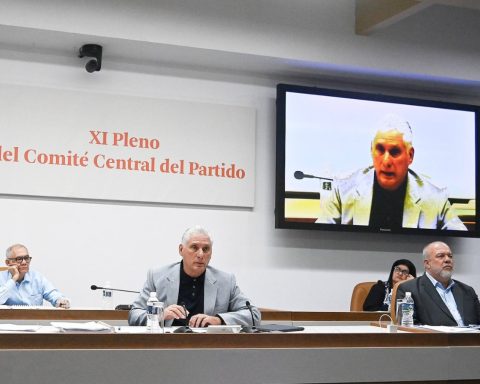The head of the main public health agency in USA announced this Wednesday a reorganization of the entity, with the intention of making it more agile.
This is due to the fact that several mistakes were made during the coronavirus pandemic, from the publication of studies with a lack of depth to problems in public communication and in the integration with other agencies in the country.
The changes now planned in the Centers for Disease Control and Prevention (CDC, for its acronym in English) are also carried out due to the great amount of criticism that the agency has received for its confrontation with COVID-19, monkeypox and other diseases. The reorganization also includes internal staff moves and steps to speed up data release.
The director of the CDC, Dr. Rochelle Walensky, informed the members of the agency about the changes this Wednesday and clarified that it is an internal initiative, without interference from the White House.
“I feel like it’s my responsibility to take this agency to a better place after three really challenging years,” Walensky told the agency. AP.
The CDC, with a budget of $12 billion and more than 11,000 employees, is a federal agency based in Atlanta tasked with protecting Americans from disease outbreaks and other public health threats. It is customary for each director of the entity to carry out a reorganization, but Walensky’s action comes amid a broader demand for changes.
The agency has long been criticized for being too heavyweight, focused on data collection and analysis but failing to act quickly against new health threats.
Nonetheless, public discontent with the agency grew dramatically during the pandemic. Experts said the CDC was slow to acknowledge the amount of virus entering the country from Europe, recommend that people wear masks, say the virus can spread through the air, and increase routine testing for new variants.
“During COVID, we saw that CDC structures, quite frankly, were not designed to receive information, digest it, and spread it to the public at the necessary speed,” he said. Jason Schwartza health policy researcher at the Yale School of Public Health.
Walensky, appointed director in January 2021, has long said the agency needs to move faster and communicate better, but the stumbles have continued during her tenure.
In April, the director called for an in-depth review of the agency, which resulted in the announced changes. Her reorganization proposal must be approved by the secretary of the Department of Health and Human Services. CDC officials say they hope to have a full package of changes finalized, approved and underway early next year.
The steps announced this Wednesday include:
—Increasing use of preprinted scientific reports for actionable data, rather than waiting for research to go through peer review and publication in the CDC journal, Morbidity and Mortality Weekly Report.
—Restructuring the agency’s communications office and further revamping CDC’s websites to make the agency’s guidance to the public clearer and easier to find.
—Altering the amount of time agency leaders spend on outbreak responses to a minimum of six months, an effort to address a turnover issue that has sometimes caused knowledge gaps and affected agency communications.
—Creation of a new executive council to help Walensky set strategy and priorities.
—Appoint Mary Wakefield as lead counselor to implement the changes. Wakefield led the Health Resources and Services Administration during the Obama administration and also served as second administrator at the Secretary of Health.
—Altering the organization chart of the agency to undo some changes made during the Trump administration.
—Establish an office of intergovernmental affairs to facilitate partnerships with other agencies, as well as a higher-level office on health equity.
Walensky also explained that he intends to “get rid of some of the reporting layers that exist,” and that he would like to “work on redesigning the archives.” But he didn’t specify what that might entail, rather the overall changes have less to do with redrawing the organization chart than with rethinking how the CDC works and motivates his staff.
“This will not be just moving boxes” on the organization chart, he said.
Schwartz asserted that the flaws in the federal response go beyond the CDC, because the White House and other agencies were heavily involved and did not provide proper guidance.
A reorganization of the CDC is a positive step, but “I hope it’s not the end of the story,” said Schwartz, who would like to see “a broader accounting” of how the federal government handles health crises.
All this is also inserted in the fact that the American scientific community has warned of the possibility that in the coming years, and decades, the world will have to face new pandemics.
















